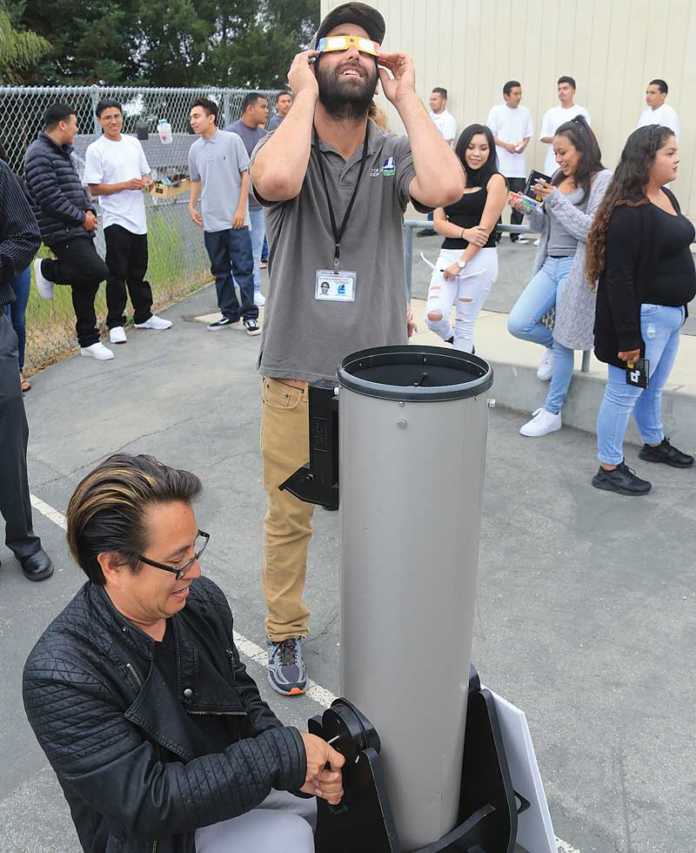WATSONVILLE — Across the country, millions of Americans craned their necks toward the sky and covered their eyes in protective glasses to witness a phenomenon that hadn’t happened in nearly 40 years.
For a few minutes, the moon passed completely between the sun and Earth, turning areas of the country dark when it had just been a normal sunny summer day.
But Mother Nature in Watsonville didn’t get the memo on Monday. A thick cloud layer rolled in during the early morning, bringing with it a light drizzle that didn’t burn off until the moon had long passed.
Holding out hope that the clouds would clear, students and teachers from New School Community Day School were joined by the Watsonville Environmental Science Workshop, part of the school-wide Eclipse Event.
As the 10:30 a.m. time of the total eclipse approached, teacher Bryan Love led a countdown. At the end, the sky did look a little darker than usual, almost like a cloudy winter morning.
Jokingly, Love instructed the students to put on their darkened eclipse glasses as a way to experience a “total eclipse.”
Even though the sun never shone through, Love said the event was a good opportunity to teach students the historical and cultural significance of the solar eclipse.
“It’s a once-in-a-lifetime experience,” he said, adding that the students would remember the day for years to come, either for good or bad.
The event began with a presentation on Friday on the eclipse, and continued Monday morning with videos, safety warnings and a questionnaire.
According to NASA, the eclipse track began in Oregon and exited near South Carolina. The next total solar eclipse visible from the United States is expected to occur on April 8, 2024.
Darren Gertler, coordinator of the Environmental Science Workshop, was joined by staff who brought a large telescope and a white sheet of paper in hopes of projecting the eclipse.
The timing of the eclipse was significant because it allowed the students to study the rare event in an academic setting, Gertler said, even though the weather put a damper on it.
“The cloud cover is pretty thorough,” he said.











